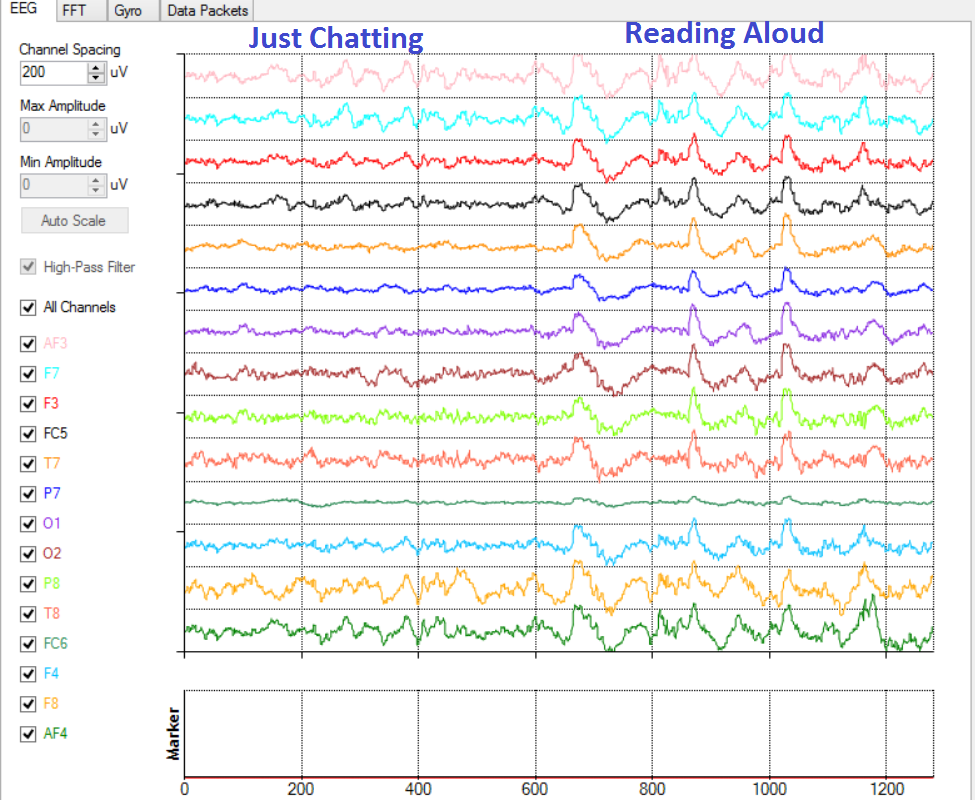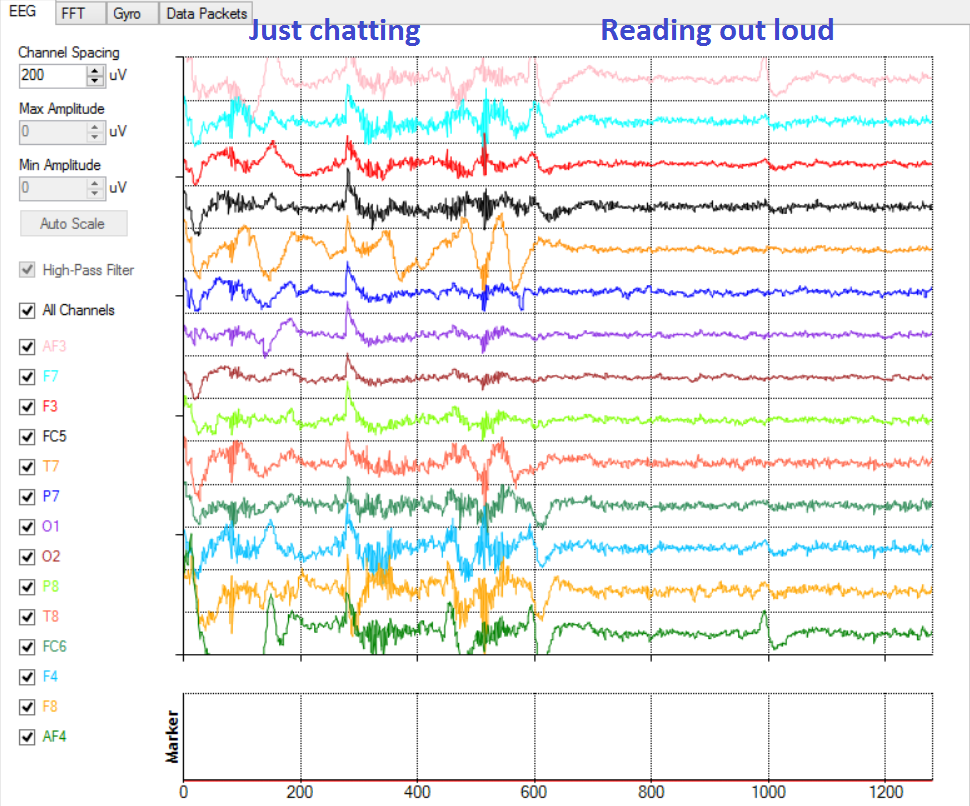How this all came about ...
Since 1996 I have worked with Dyslexics. Using a technique I stumbled upon while working with Voice Recognition technology, I accidentally found a way of helping Dyslexics to reprogram their own brain and thereby gain the ability to read easily and naturally. I had worked in IT continuously since 1980, continuing to do so alongside this until 2012.
If you want to know how an IT guy got involved in solving the reading and writing problems for Dyslexics, you can read more here (opens in a new tab) or by clicking the "Origins" button.
Curiosity got the better of me ...
In 2013 I helped to crowdfund the development of a portable EEG headset that would connect to a laptop or PC. I thought that this might help me to see what was happening inside their brain. Basically what I wanted to know was: Is there a difference in brain function between a Dyslexic and a non-Dyslexic? I really wanted to understand what was happening, to find out if I could see any difference between someone who is Dyslexic and someone who is - how would you say - "Lexic" (or non-Dyslexic).
The EEG Evidence ...
Here below are two images taken from EEG traces for two different people, one Dyslexic and the other one Lexic.
EEG Equipment Description
For full details and specifications of the equipment, go to EEG Equipment Specs (link opens in a new tab)
EEG Trace of a non-Dyslexic person
This first EEG trace shows a non-Dyslexic's brain activity over a 60 second period. I'll refer to the timeline by using the "Marker" panel at the bottom of the image, so you can be really clear about what is happening, and when.
From "0" to the "500" point, he and I are just chatting about what he'd done on the weekend.
Then at the "500" Marker, I tell him that I want him to read out loud from a book I had brought with me.
From a point at about "620" along the Marker, he is reading, and you can see from the brain activity that he is fully engaged in what he is reading, perhaps creating pictures in his mind from the imagery of the language, as he reads. His brain activity and engagement actually seems higher than when we were chatting in the first part of this trace.
![]()

EEG Trace of a Dyslexic person
This second EEG trace shows how a Dyslexic's brain behaves over a 60 second period using the same criteria as in the above example. As above, we'll use the same "Marker" panel at the bottom of the image as the time reference, to be clear about what is happening and when.
From "0" to about the "450" point, he and I are just chatting about what he'd done on the weekend, just as in the first example. You may notice that he appears to be more mentally engaged in this conversation than the non-Dyslexic was. This is quite a typical observation, and has become one of the common first indicators.
Then just after the "450" Marker, I tell him that I want him to read out loud from a book I had brought with me. Instantly you can see the panic, visible in the sudden high amplitude picked up across all sensors.
From a point at about "600" along the Marker, he is "reading", and the difference is quite stark - the brain shows no engagement at all.
The first time I saw this I was shocked, to say the least. The implication I took from this is that the only thing his brain is doing here is the effort to decode the letters and words he sees, and trying to connect that with what he can speak.
The lack of brain activity elsewhere reflects the fact that ALL of his processing capacity is tied up with trying to work out what is written on the page, and turning it in to something he can then verbalise.
It's almost like his brain has flatlined. And when asked just a couple of minutes after finishing reading, he remembers nothing of what he read.
Since opening this pandora's box in 2013, I have done this same exercise with more than a thousand Dyslexics, and they ALL exhibit the same characteristic shock and stress, then flatline.
![]()

Originally, I simply wanted to see you how the brain activity changes when each person goes from just chatting to reading aloud, and whether there were any observable differeneces in brain activity between Dyslexics and non-Dyslexics. It had always been blatantly obvious that the speech was distinctly different - was there a corresponding difference in how the brain behaved during all this?
I think you can clearly see from the above examples that there are clear differences between the two individuals, and especially between the two states representing the activities the two people were doing at the time for each person. Of far greater significance though, my investigations show that once my work with the Dyslexic is complete, the transitions and brain activity change to such an extent and so dramatically, that their EEG trace is...
indistinguishable from that of a Lexic (non-Dyslexic) person.
Our Services
Contact Us
Feel free to reach out to us with any questions or inquiries.
